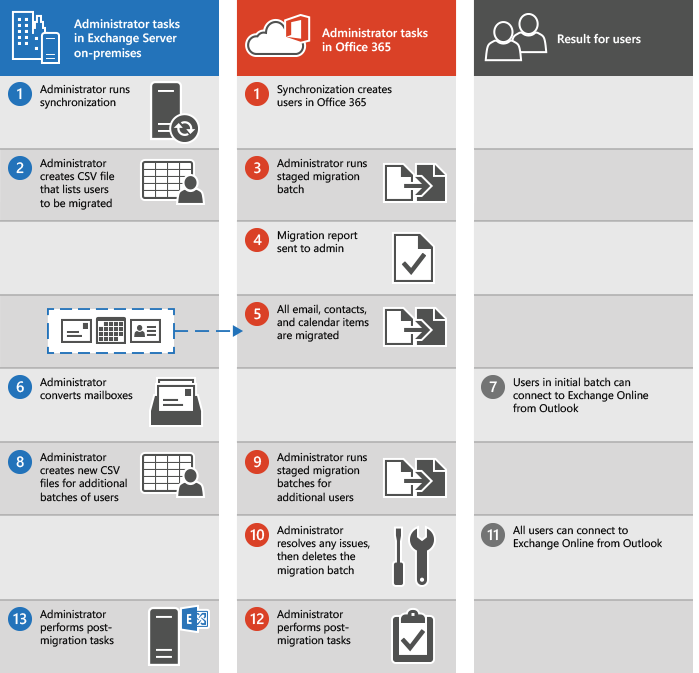Note
Access to this page requires authorization. You can try signing in or changing directories.
Access to this page requires authorization. You can try changing directories.
When you want to migrate the contents of user mailboxes from a source email system to Office 365, when you do this over time, it's called a staged migration. A staged migration isn't intended for organizations that want to permanently maintain mailboxes in both their on-premises organization and Exchange Online or that plan to transition all mailboxes to Exchange over a long period of time. An Exchange hybrid deployment is a better solution for maintaining on-premises and cloud-based mailboxes for the long term because it offers features such as secure mail routing between on-premises and Exchange Online organizations, a unified shared address book, Free/Busy and calendar sharing between on-premises and Exchange Online organizations, and the ability to move Exchange Online mailboxes back to the on-premises organization.
A staged migration is recommended when:
- Your source email system is Microsoft Exchange Server 2003 or Microsoft Exchange Server 2007.
NOTE You can't use a staged migration to migrate Exchange 2013 or Exchange 2010 mailboxes to Office 365. Consider using a cutover migration or a hybrid email migration instead.
- You have more than 2,000 mailboxes.
Let’s check the 11 Tasks which needed to be done in order to proceed with Staged Exchange Migration:
- Prepare for a staged migration
- Verify you own the domain
- Use directory synchronization to create users in Office 365
- Create a list of mailboxes to migrate
- Connect Office 365 to your email system
- Migrate your mailboxes
- Start the staged migration batch
- Convert on-premises mailboxes to mail-enabled users
- Route your email directly to Office 365
- Delete the staged migration batch
- Complete post migration tasks
On the next article, we will talk in more details for the Tasks on Exchange Staged Migration.
Stay Tune…
